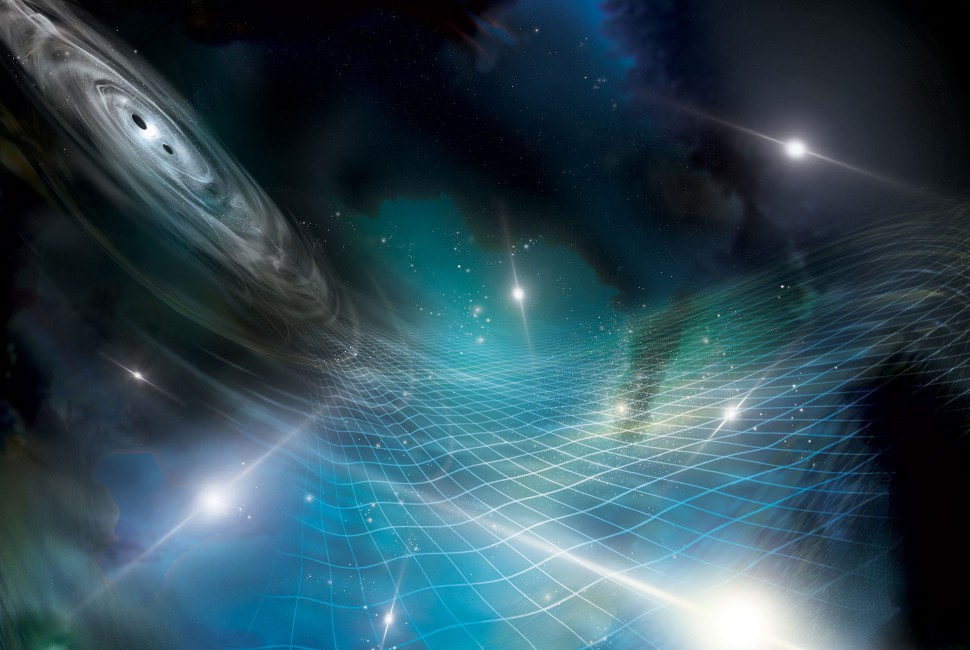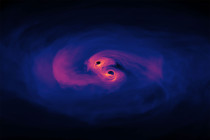An international team of researchers, including Northwestern University astrophysicists, have used a galaxy-sized tool composed of 68 dead stars to sense the longest, slowest gravitational waves ever detected.
With lengths equivalent to 15 light-years, some of the waves are so long and slow that it takes 15 years for each individual wave cycle to fully pass through Earth. Together, these gravitational wave signals overlap, like voices in a crowd or instruments in an orchestra, producing an overall cosmic “hum” that imprints a pattern in the data.
The record-breaking gravitational-wave signal was observed in 15 years of data acquired by the North American Nanohertz Observatory for Gravitational Waves (NANOGrav) Physics Frontiers Center (PFC), a collaboration of nearly 200 scientists from the United States and Canada who use a type of exotic neutron star, called pulsars, to search for gravitational waves.
Learning how the universe evolved
While earlier results from NANOGrav uncovered an enigmatic timing signal common to all the pulsars they observed, the signal was too faint for researchers to determine its origin. The 15-year dataset release demonstrates that the signal is consistent with slowly undulating gravitational waves passing through our galaxy. By further investigating these monster waves, astrophysicists could potentially learn more about how the universe evolved on the largest scales, how often galaxies collide and what drives black holes to merge.
A suite of four papers detailing the new discovery will be published on June 28 in The Astrophysical Journal Letters. Northwestern postdoctoral fellow Caitlin Witt co-authored all four papers as well as a complementary set of papers now available on ArXiv. A public lecture will air on YouTube Thursday, June 29.
“We think the most likely source of this type of signal is a population of supermassive black hole binaries, but we want to be careful not to assume that,” Witt said. “Scientists also have theorized that it could be remnants from the Big Bang or cosmic strings generating this signal. The publication of these studies is not the end of our research but the beginning. It’s the starting gun, marking the beginning of trying to understand this new population of gravitational waves.”
Witt is the inaugural CIERA-Adler Postdoctoral Fellow at Northwestern’s Center for Interdisciplinary Exploration and Research in Astrophysics (CIERA) and the Adler Planetarium. Luke Kelley, an astrophysicist at the University of California, Berkeley and former postdoctoral fellow at CIERA, is chair of NANOGrav’s astrophysics group.
The NANOGrav Collaboration is led by Stephen Taylor of Vanderbilt University, Maura McLaughlin of West Virginia University and Xavier Siemens of Oregon State University.




